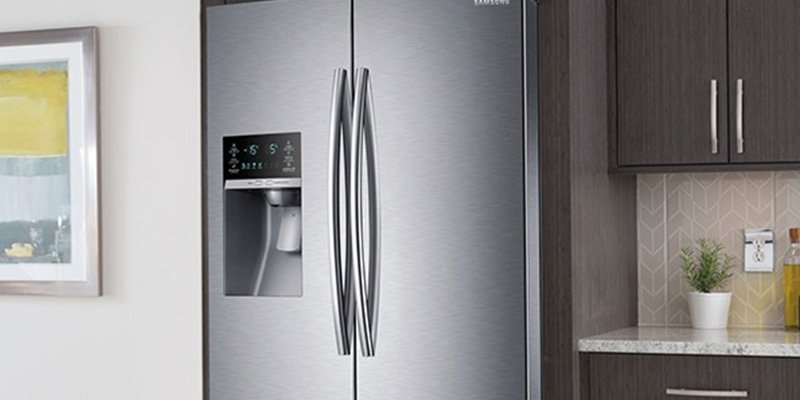Is your Samsung fridge ice maker not working? Don’t worry, we’ve got you covered. Nothing is more frustrating than discovering your ice maker isn’t functioning properly. In this comprehensive guide, we’ll walk you through troubleshooting steps, possible solutions, and insights into resolving the issue. Let’s dive in and get your ice maker producing ice again.
1. Common Signs of a Faulty Ice Maker
Experiencing a lack of ice production in your Samsung fridge? Before we delve into solutions, let’s identify the common signs that your ice maker might be malfunctioning:
- Reduced Ice Output: Your fridge isn’t producing as much ice as it used to.
- No Ice Formation: Your ice maker isn’t producing any ice at all.
- Odd Noises: Unusual noises like grinding or clicking coming from the ice maker.
- Leakage: Water leaks around the ice maker or inside the freezer.
- Slow Ice Making: The ice maker takes an unusually long time to produce ice.
2. Possible Causes for Samsung Fridge Ice Maker Not Working
Understanding the underlying causes is essential to effectively troubleshoot the issue. Here are several possible reasons why your Samsung fridge ice maker isn’t working:
- Water Supply Issues: Insufficient water supply or a blocked water line can hinder ice production.
- Temperature Settings: Incorrect freezer temperature settings can impact ice maker performance.
- Frozen Water Line: A frozen water line prevents water from reaching the ice maker.
- Faulty Water Inlet Valve: A malfunctioning inlet valve hinders water flow to the ice maker.
- Defective Ice Maker Unit: Internal components within the ice maker might be malfunctioning.
3. Troubleshooting Steps
To tackle the “Samsung fridge ice maker not working” issue, follow these steps:
Check the Water Supply
Ensure the water supply is connected and water is flowing adequately. If there’s an issue, consult your user manual for instructions on connecting the water line properly.
Inspect Freezer Temperature
Make sure the freezer temperature is set between 0 and 5 degrees Fahrenheit (-18 to -15 degrees Celsius) for optimal ice production.
Thaw Frozen Water Line
If the water line is frozen, unplug the fridge and allow it to defrost. Alternatively, use a hairdryer on low heat to melt the ice.
Examine the Water Inlet Valve
Inspect the water inlet valve for any clogs or malfunctions. Replace it if necessary.
Reset the Ice Maker
Reset the ice maker by turning it off, waiting for a few minutes, and then turning it back on. Consult your user manual for specific instructions.
4. Common FAQs About Samsung Fridge Ice Maker Issues
Q: Why is my Samsung ice maker not making ice even though it’s turned on?
A: The water supply might be insufficient or blocked. Check the water line and ensure the water inlet valve is working correctly.
Q: Can high room temperature affect ice production?
A: Yes, if the ambient temperature is too high, it can impact the efficiency of the ice maker. Maintain a cooler environment for optimal ice production.
Q: How often should I replace the water filter in my Samsung fridge?
A: It’s recommended to replace the water filter every 6 months to ensure clean and clear ice production.
Q: The ice cubes are smaller than usual. What could be the problem?
A: A lower water pressure issue might result in smaller ice cubes. Check the water supply and inlet valve for any restrictions.
Q: Is it necessary to hire a technician to fix the ice maker?
A: While some issues can be resolved on your own, complex problems might require professional assistance, especially if it involves internal components.
Q: What should I do if water is leaking from the ice maker?
A: Check for a clogged defrost drain or a misaligned water line. Clear any obstructions and ensure proper alignment.
5. Conclusion
Experiencing a Samsung fridge ice maker not working can be frustrating, but armed with the right knowledge, you can tackle the issue effectively. By following the troubleshooting steps and considering the common FAQs, you’ll be on your way to enjoying a fully functional ice maker once again. If the problem persists or seems complex, don’t hesitate to seek professional help to ensure your ice maker is operating optimally.



